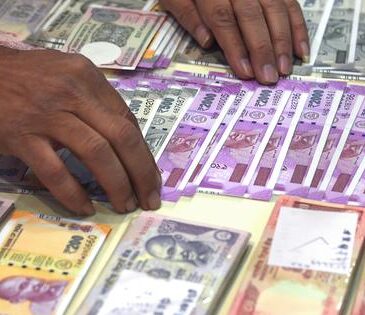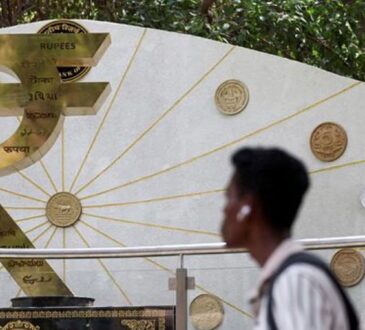Sign up to receive CFR President Mike Froman’s analysis on the most important foreign policy story of the week, delivered to your inbox every Friday afternoon. Subscribe to The World This Week.
More From Our Experts
Greetings from Tokyo.
More on:
My deep interest in Japan dates back to my days working as a young summer associate at a Japanese law firm in Tokyo in 1989. (My now-wife, Nancy, worked at the rival law firm.) In those days, Japan was in the midst of an incredible economic boom fueled by their robust manufacturing sector. Many believed that Japan was poised to overtake the United States to become the largest economy in the world. Naturally, Nancy and I wanted to see what the hype was all about.
At the time, the means of Japan’s economic ascent—which included a combination of protectionist trade policies, domestic preferences, and expansive industrial policies—were the subject of great study and criticism. As Karen Tumulty observed recently in the Washington Post, back in the 1980s, then-Chrysler CEO Lee Iacocca worried that “Japan appears capable of looting our markets with impunity,” and that amid a flood of Japanese exports, the U.S. economy risked becoming “little more than drive-in banks, hamburger joints and videogame arcades.” Iacocca’s lament rhymes with President Donald Trump’s contemporary critique of China and the global trading system, and it’s instructive to look back at how the United States navigated Japan’s meteoric rise as Trump seeks to fundamentally reshape U.S. international economic policy.
In the early 1980s, the value of the dollar surged by 50 percent over five years relative to the currencies of Japan, West Germany, France, and the United Kingdom (UK). Concurrently, the United States’ manufacturing industry began to stagnate, and, in some respects, shrink, while the United States also went from being the world’s largest creditor country to its largest debtor country. By the numbers, from 1975 to 1995, Japan’s share of global manufacturing more than doubled from around 10 percent to around 20 percent due in part to the relatively low value of Yen, which was a boon to Japanese exporters, particularly in the steel, automotive, semiconductor, and consumer electronics sectors.
More From Our Experts
Competition from foreign imports in the 1980s spurred a swift and sharp rise in protectionist sentiment in the United States, leading to a series of highly restrictive trade bills that made their way through Congress and all the way to President Ronald Reagan’s desk. For all of his talk about free trade, Reagan was not averse to the occasional foray into protectionism. Some enterprising young Deputy United States Trade Representative named Bob Lighthizer (who later became the thought leader behind Trump’s trade policy) negotiated a series of voluntary restraint agreements to restrict Japanese exports to the United States. In the meantime, Reagan and his Secretary of the Treasury James Baker devised an alternative scheme to rebalance the United States’ position in the global economy.
On September 22, 1985, at the Plaza Hotel, Baker joined the finance ministers and central bank governors of France, West Germany, Japan, and the UK to sign what would become one of the most consequential currency agreements in modern economic history. The Plaza Accord’s deliberately anodyne language, declaring that “some further orderly appreciation of the main non-dollar currencies is desirable” and that the G5 would “stand ready to cooperate more closely to encourage this when to do so would be helpful,” was Treasury-speak for something quite momentous.
More on:
Although the dollar had already begun to weaken in the months leading up to the announcement, the Accord accelerated its slide. The greenback plummeted 4 percent the following Monday and, coupled with shifts in U.S. and foreign monetary policies, would ultimately fall some 40 percent within the next two years. In fairness, today, many economists doubt the extent to which the Plaza Accord was responsible for these currency swings—but the signal the Accord sent to the market, and impact of the subsequent market swings, was significant.
For U.S. industries threatened by foreign competition—from steel mills in Pennsylvania to textile factories in the Carolinas to auto plants in Michigan—the dollar’s fall provided much-needed breathing room as exports became more competitive. In quantitative terms, as the dollar fell, the United States’ trade deficit in manufactured goods fell by approximately 65 percent, and exports’ share of gross domestic product (GDP) rose materially from around 3 percent to around 6 percent. In the long run, the trade deficit with Japan did prove stubbornly resistant due to structural factors and Japan’s industrial policies, but there is no doubt the dollar’s fall made a dent in the asymmetric balance of trade.
Simultaneously, the Accord marked Japan’s emergence as a critical player in global monetary governance, while inadvertently contributing to its eventual economic bubble as Japanese authorities slashed interest rates to counter the soaring yen, flooding their economy with easy money that fueled speculative investments in real estate and equities. In fact, during my summer in Tokyo, the grounds of the Imperial Palace in the middle of Tokyo were thought to be worth more than all the real estate in California combined, and the Japanese stock market reached levels it would not eclipse until 2024.
Today, I can’t help but feel a degree of déjà vu as concerns about global imbalances, overvaluation of the dollar, and manufacturing surpluses are front and center again. There is even speculation over a new accord to be named after one of Trump’s other real estate purchases, Mar-a-Lago.
Only this time, China is the biggest trading power on the global stage, and it is unclear whether the United States has sufficient leverage to force them to rebalance their economy away from their model of export-led growth. Furthermore, the scale of China’s industrial policy dwarfs that of Japan. As my colleague and CFR Senior Fellow Brad Setser has well documented, China’s manufacturing surplus is far greater than the surplus posted by Japan, let alone Germany, in the 1980s and 1990s.
Moreover, the Plaza Accord worked in part because the United States ultimately had the full cooperation of the other major economies. It revealed the need for closer international financial cooperation in an increasingly interdependent global economy where domestic policies could generate international shocks. Our other major trading partners, including key military allies in Europe and the Indo-Pacific, are likely to be less pliant than they were in 1985. In the context of the Trump administration’s tariff strategy, there is limited goodwill on the part of our major trading partners—think China, Canada—which could make reaching an accord, let’s say, somewhat challenging. As CFR Senior Fellow Rebecca Patterson has written, given Trump’s maximalist aims in an increasingly fragmented geopolitical landscape, “Mar-a-Lago is unlikely to get the cross-border coordination required to succeed.”
Finally, in late breaking news, the White House announced a trade agreement yesterday with the UK. The details remain to be determined in a number of the areas, but it provides insight into where the Trump administration is heading. While the deal is better than the worst-case scenario, it looks like the tariff rates facing the UK will be substantially higher than they were before Liberation Day. If the UK deal is any indication of what’s to come, countries shouldn’t expect the administration’s fixation on tariffs to go away, even if they are successful in reaching a deal.
We welcome your feedback on this column. Let me know what foreign policy issues you’d like me to address next by replying to [email protected].




